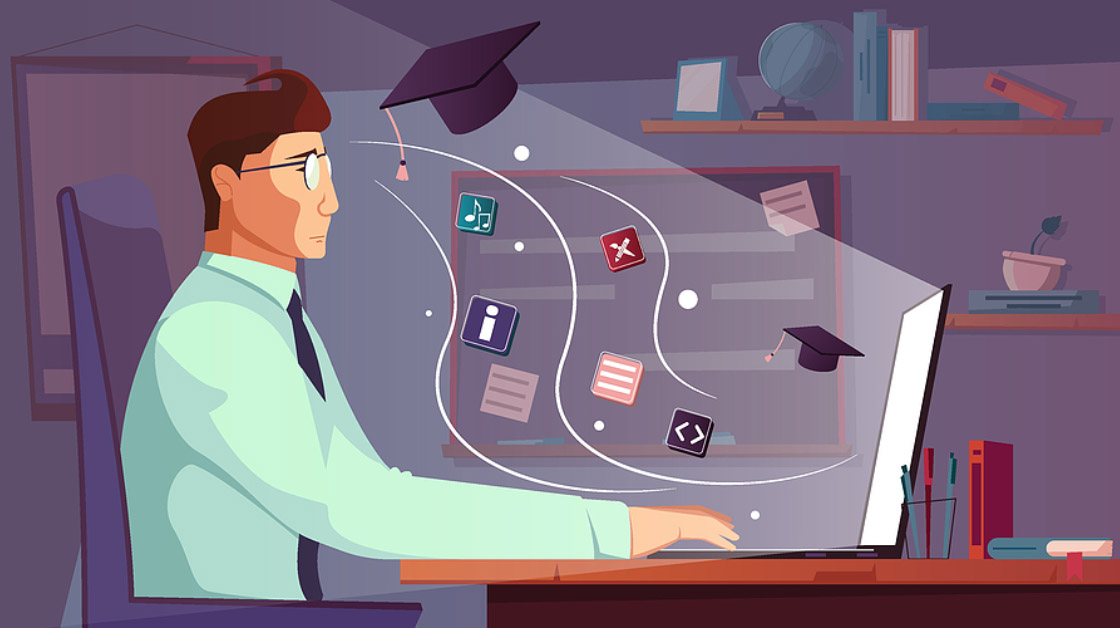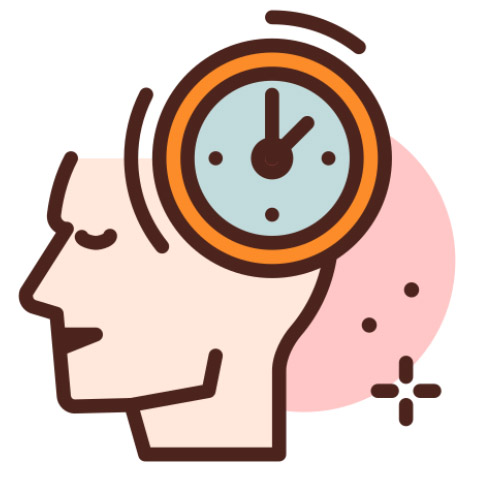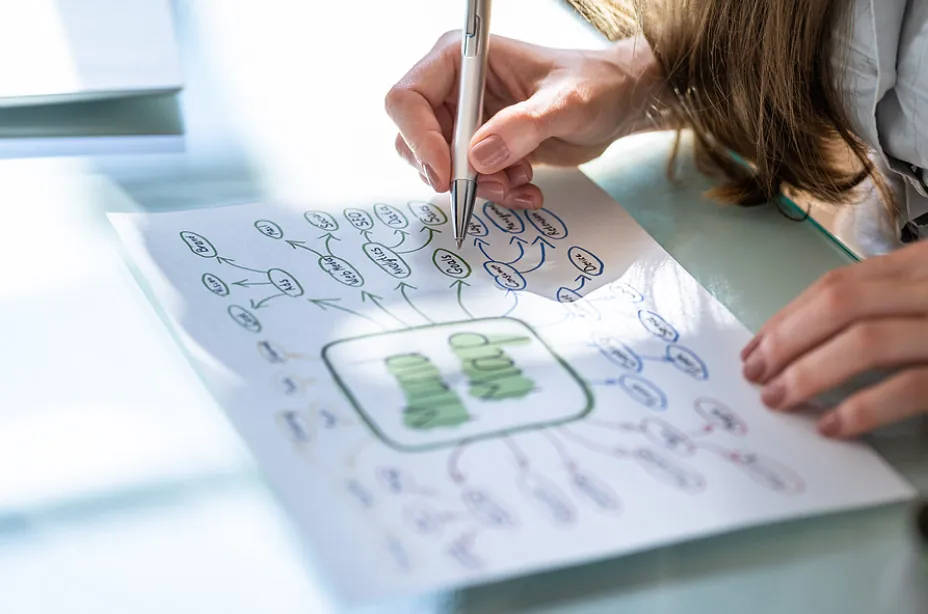
A relatively recent schema in learning and development, Information Processing Theory (IPT) is a way of understanding the human mind and how it retains knowledge that has become increasingly influential.
Psychologists like Crick and Dodge have shown how an awareness of this theory can lead to improved outcomes for children with behavioural disorders. However, the theory has wide-ranging applications for adult learners too and has real practical application in knowledge retention.
Let’s take a deep dive into the world of IPT to understand what is, how to apply it and examples of it in action.
Definition of Information Processing Theory
Information Processing Theory explains knowledge retention in terms of three linked stages – sensory memory, short-term memory, and long-term memory. It builds a machine-like model of the human mind as it processes and stores information. It also makes recommendations for how to improve knowledge retention and retrieval (Çeliköz, Erişen, & Şahin, 2019).
George Armitage Miller (1920-2012), who named the theory, was one of the founders of cognitive psychology, a school of thought which sought to examine how human brains mechanistically process and retain information.
Miller’s theories built upon existing theories of cognition and were boosted by the exponential growth of computing through the 1950s when Miller first espoused his theory. In fact, Miller developed a lexical database called WordNet, which became essential to computer language models.
In the 70 years since the theory was first proposed it has been expanded and built upon by other psychologists. These included Richard Shiffrin and John William Atkinson, who developed the multi-stage model of memory (sensory, short, and long-term). This then led to more complex models of executive function and memory, such as that of Alan Baddeley and Graham Hitch (1974).
Depicted diagrammatically, the Atkinson-Shiffrin multi-store model looks like this:

[source: Simply Psychology]
We’ll look more closely at these concepts in the rest of this article.
Key Concepts of Information Processing Theory
Let’s begin by breaking down the stages of memory to show how each contributes to the storage and retrieval of knowledge, according to Information Processing Theory.
Sensory Memory
Sensory memory takes in information in raw form from the environment, in the form of sights, sounds, smells, tastes and sensations. Its function depends on the efficacy of our senses, which can be affected by our well-being and by the presence of chemical stimuli or depressants and be the reason many people are dependent on things like caffeine for mental alertness.
Sensory memory does not process or make sense of this raw data. It merely retains or loses information through forgetting. It exists in a near-constant now, effectively erasing stimuli like CCTV cameras that run on a loop. Fortunately, it also pushes some information towards the next stage of the process.
Working Memory/Short-term Memory
The working or short-term memory is the part of our mind that interprets. This process occurs largely in the prefrontal cortex. This brain area takes the remembered stimuli we receive and begins to process and make sense of them. It is also a rather fragile stage since distraction can easily lead to information loss.
Perhaps you’ve heard of the “person from Porlock”?
18th-century English poet Samuel Taylor Coleridge famously claimed that he dreamt the entirety of his 1797 poem Kubla Khan but was interrupted in the act of writing it down by an ill-timed visitor (from Porlock in Somerset). Coleridge apparently forgot the rest of the poem, and his existing 54-line version remained incomplete.
According to IPT, Coleridge’s short-term memory was interrupted before he could commit the information to paper or make conscious efforts to retain it (through rehearsal and consolidation) in the final information processing stage.

Long-term Memory
Once information is committed, with effort or repetition, to long-term memory, it can be retained, potentially indefinitely. However, IPT allows for the gradual erosion of memories from long-term storage through forgetting.
Long-term memory does seem qualitatively different from short-term memory. Patients with early-stage dementia, whose short-term memory has become highly deficient, often show remarkable recall of information many decades old, which has been retained in their long-term memory.
Neurophysiology has shown that long-term memories are not retained in just one part of the brain. Even something as simple as remembering an acquaintance’s name upon meeting them after a period of time draws upon the left frontal lobe (for language), the hippocampus (where experiences are stored) and the medial parietal cortex (which aids in recognition).
The process of drawing upon different regions of the brain involved in long-term memory is called retrieval. This is rather like calling up files from a hard drive, where they are safely stored until needed.
Attention
There are several different processes involved in the act of remembering and learning. The most vital of these is attention. In the multi-stage model, it is attention that codifies a short-term memory for long-term storage. We must actively process data if we intend to reliably retain it.
Education is the process of focusing attention on data to imprint it on long-term memory. Attention, therefore, is what L&D specialists must work to maximise in their course creation.

Metacognition
Metacognition is the ability to think about thinking itself. We develop this ability in later childhood as we learn methods for consciously memorising information or calling upon it when needed.
There are many different simple metacognitive tools we can employ including acronyms, mnemonics, rhymes, rules of thumb, and diagrams. There are also complex techniques such as “memory palaces” designed to help retain and retrieve large amounts of information or lists of facts.
Metacognition extends beyond memory, of course, and has given rise to schools of psychotherapy such as cognitive behavioural therapy, which encourage conscious awareness of negative thought patterns, so that these can be changed.
Implications of Information Processing Theory for Learning and Development
IPT reveals how the brain processes and retains information, which can provide invaluable insights to learning and development professionals. Here are just some of the implications of the theory in a training context:
- Sensory stimuli are your first port of call in building the raw materials for memory. L&D trainers can use more than just text or speech to impart knowledge.
- Attention must be focused on the subject matter in question for it to stand a chance of making it through to long-term memory.
- Rehearsal (mental repetition of information) is a vital stage in short-term memory processing, helping reinforce data and making it more conducive to retention. However rote learning alone won’t secure information within long-term memory.
- Consolidation is the appropriate process for ensuring memories are retained long-term. This is the linking of new data to existing information. Courses which properly interrelate concepts and build systematically are better designed for long-term information retention.
- Retrieval is an overlooked aspect of knowledge acquisition. Students can be encouraged to master methods of information retrieval, such as using mnemonics, or chunking information, rather than trying to swallow lengthy courses whole.
- Retention and retrieval can also be improved when students are physically and mentally capable. In other words, when they have had enough sleep, and are emotionally stable and comfortable. Stressful learning environments are to be avoided.

How to Apply Information Processing Theory
Next, let’s turn to some practical methods for knowledge retention, informed by the language and models of IPT.
Strategies for improving memory and retention
1: Mnemonics – these are shorthand methods for retaining and recalling information.
A mnemonic often used in business is SMART (as in goals). This acrostic (a word made from the initials of other words) stands for “specific, measurable, appropriate, realistic and time-limited.” Once memorised, it’s easy to recall years later.
“Richard of York Gave Battle in Vain” was once a common acrostic for children to remember the order of colours in the visual spectrum.
Students can, of course, create their own mnemonics, including musical ones which set a particular phrase to the tune of a popular melody. Advertisers use these in their product-related jingles. I’ll bet you can think of a few from your childhood.
2: Chunking – breaking down information into bite-sized pieces and absorbing them at the student’s preferred pace.
Course designers can create modular lessons which can be taken in within a short period of time (note that focused attention is only possible in roughly 20-minute slots).
3: Writing Information Down – note-taking isn’t necessarily about having a written record to refer to when revising. The process of writing itself pushes the information through a conscious process of attention and reframing. The student must first understand the concepts that they are translating into their own sentences.
Apparently, handwriting beats typing in this respect, studies show.
4: Memory Palace – Creating a memory palace means building a metacognitive structure in which information is stored. It’s an age-old technique. Sir Arthur Conan-Doyle had his genius detective Sherlock Holmes use such a technique, but it dates back to ancient Greece and is attributed to the poet Simonides of Ceos.
Attending a banquet, Simonides briefly left the hall to meet a guest. During his absence, the building collapsed, killing the remaining diners. It is said that Simonides was able to name the unrecognisable bodies by calling to mind an image of where individual diners had been sitting.
The memory palace technique involves creating a virtual space and then locating information within it, such that by “walking” through it you “see” the individual concepts appear in a specific sequence. Making these image-memories as outlandish as possible helps to aid recall.
This may not be the easiest technique to master, but it can have extraordinary results. The celebrated mentalist Derren Brown explains the method here.

Learn How To Create Personal Learning Journeys For FREE!
Techniques for Enhancing Attention and Focus
Getting stimuli into the short-term and long-term memory involves paying close attention, but this can be extremely taxing. Here are some techniques to maintain focus.
1: The Pomodoro Technique. Named after a novelty cooking timer shaped like a tomato, this method simply breaks study into 25-minute periods with five minutes of rest and recovery between each one.
In course design, if you ensure that no one module takes longer than 25 minutes to complete, you’ll minimise the need for interruption. Students can use the timers on their phones to interrupt periods of extended study.
2: Eliminate Distractions. Students should be encouraged to find quiet places to work, free from interruptions. They must put their distracting devices aside (apart from anything they’re using to take an online course).
The learning environment should be free from attention-drawing stimuli such as music (especially music with lyrics), crowds of people, food smells or noises. Studying with Netflix on in the background is not to be encouraged!
3: Sleep Well. There is little need to emphasise how important sleep is for learning and knowledge retention, as for all mental processes. If you need more convincing, here’s an extended conversation with sleep expert Matthew Walker, author of Why We Sleep, on the subject (fast-forward to the five-minute mark).
During sleep our minds integrate and link information into cohesive knowledge, making it more applicable and easier to retrieve. Sleep also makes us more receptive to new information, as well as enables this consolidation process.
4: Meditate or Spend Time in Nature. Both meditation and spending time connecting to nature have been shown to renew our ability to focus attention. Meditation is the explicitly metacognitive act of paying attention to sensory stimuli in the moment. It trains the mind to be more attentive.
Spending time in a restful natural environment, like sleep, acts as a primer for knowledge retention.


Use of Metacognitive Strategies to Enhance Learning
Encouraging students to actively attend to the process of learning, and how they form valuable memories, can be very productive. Brainstorming, then linking concepts together into thematic categories, is an act of metacognition.
Classical strategies such as the dialectic method of learning (question and answer between two interlocutors) are also inherently metacognitive since the participant is forced to think about the assumptions and inferences they are making.
Engaging actively in a debate, particularly when encouraged to state an opponent’s position fairly and accurately (“steel-manning”), is another way to use metacognition to reinforce learning.
What all these methods have in common is that they are highly participatory and active forms of learning. They are the opposite of rote repetition and contribute to the consolidation of new information in the long-term memory.
Some subjects are inherently metacognitive in nature. Social sciences, psychology and philosophy are all subjects where how we think is often as important as what we think. However, even subjects like economics and business benefit from understanding thought processes and how these reinforce behaviour.
The active nature of metacognition, especially in its collaborative versions, makes it a good approach to adopt in any course, whether in-person, online, or hybrid.
Technology Interventions Based on Information Processing Theory
There are a growing number of technologies and apps which apply the theories of Information Processing Theory. Here are just a handful of the most popular:
1: Pomotodo App. This productivity app lets you time and break up activities so you can maintain focus. It includes customisable timer duration and sounds, plus to-do lists and calendar integration.
2: Lumosity app. Brain training is made enjoyable with a series of short games aimed at helping you develop your powers of memory and focus.
3: Calm app and site. Designed for both personal and business use, this leading meditation and sleep tool can help make you a more rested and receptive learner.
4: E-Readers. Rather than using tablets which contain other distracting apps, or carrying a bag of books about, e-readers allow focused study by minimising distractions. Most use virtual paper technology to ease tired eyes.
5: Noise-Cancelling Headphones. If you find your surroundings highly distracting, these headphones use selective filtration to block out disruptive frequencies.
6: Electrical Brain Stimulation. The technology is in the early stages of development, but methods are being developed to create “memory prosthesis.” This works by repeating patterns of electrical stimulation which occur during memory formation in the hippocampus. Early trials look promising, especially for the memory-impaired.


Examples of Information Processing Theory Being Used in Learning and Development
Within learning and development, there are numerous examples of IPT informing course design. From the bite-sized morsels of information presented in the average Skillshare course, to the knowledge-reinforcing quizzes now available on most eLearning platforms, IPT is ubiquitous.
Here are several other ways in which the theory can inform L&D practice:
- The use of more interactive strategies during in-person courses.
- Modular course design, with courses completed at the student’s own pace.
- The requirement for students to restate key lessons in their own words.
- The use of a variety of sensory stimuli including sound and video content.
- The inclusion of memory aids such as mnemonics.
- Metacognitive strategies including self-talk and debate.
- The use of repetition, practice, and paraphrasing.
- The encouragement of note-taking and highlighting.
- Pair work or group work between peers.
- The active inclusion of memory or focus-training exercises.
- Including meditation or distraction-reduction measures.
Some of these interventions are easier to employ in person but many can work with eLearning content. Students should be canvassed on what works (and doesn’t work) for them.
Limitations of Information Processing Theory
There are limitations of IPT when applied to a learning context. Here are the main obstacles to overcome when favouring this approach:
- It takes a simplified approach to cognitive approaches, not allowing for the possibility of parallel processing (to extend the computing metaphor).
- It stresses that information must be repeated to be retained. However, this isn’t the case for traumatic events, where a single exposure can create a long-lasting imprint.
- It doesn’t take into consideration the emotional receptivity of the learner, who may simply resist information they find offensive or painful.
- It further neglects the effect of a charismatic leader, who may better be able to influence students than a less accomplished teacher using the same material.
- It reduces the human brain to the status of a computer, which some learners may find too reductive or off-putting.
- It downplays the interpersonal and social dimensions of group learning.
- Individual personality differences and cultural expectations do not factor into this model.
Final Thoughts
Despite the reservations outlined above, the Information Processing Theory is highly instructive in terms of helping us understand how stimuli are translated into lasting memories.
It can help L&D professions remove some of the barriers to education that some students face, by reducing distractions, making courses bite-sized, removing stressors, and developing techniques to improve knowledge retention.
Whilst it is not a universal cure-all, an awareness of the theory can help educators design learning materials better suited to the workings of our human brains, with all their evolutionary foibles.
For other related topics, why not check out our articles on Social Learning Theory, Cognitive Learning Theory or the mechanics of Learning Transfer?
If you’re ready to level up your L&D strategy with the help of an eLearning company, check us out here at Skillshub if you are looking for eLearning content.
Alternatively, you can check out our bespoke eLearning courses, designed with the lessons of IPT in mind.



















